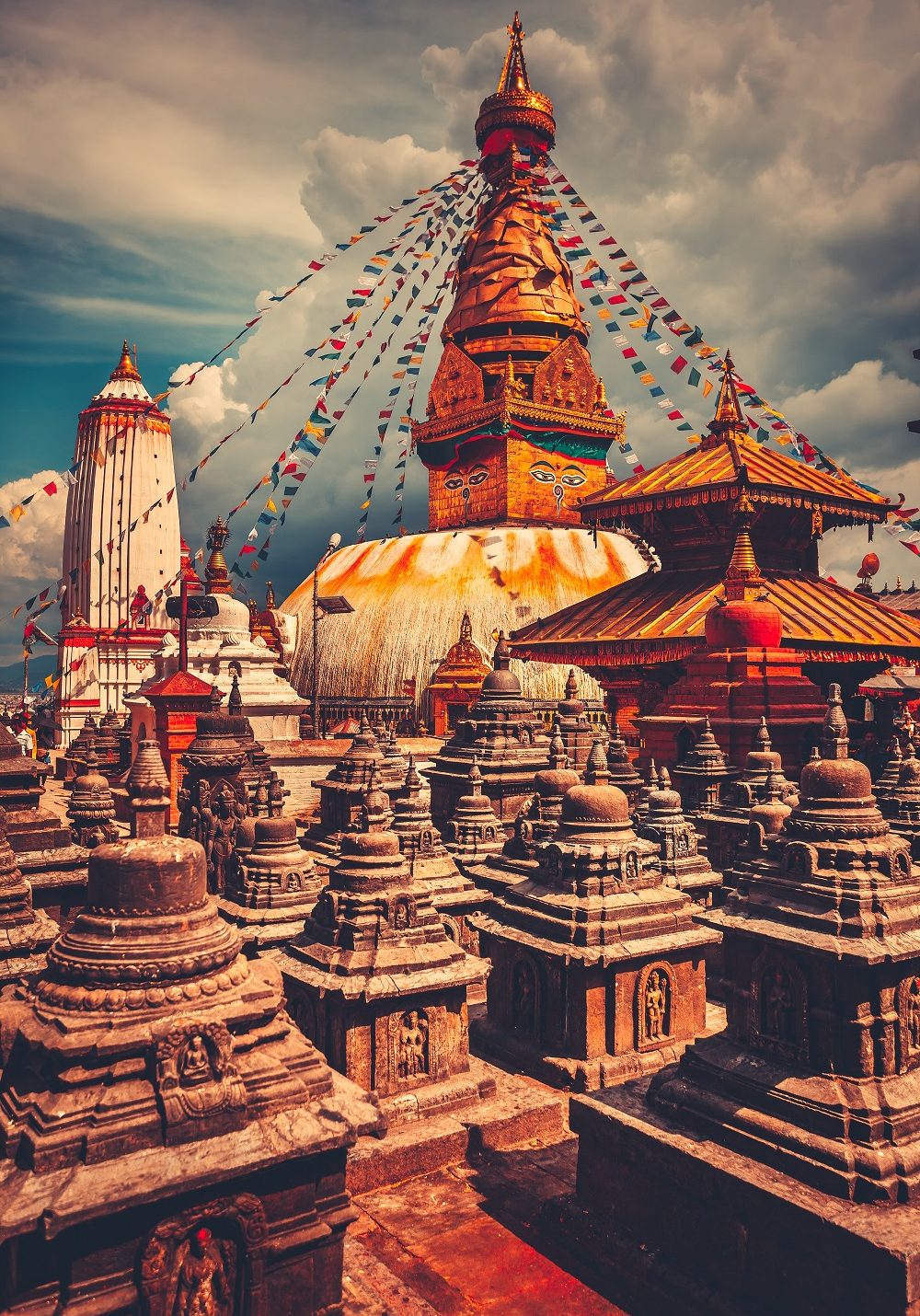KNOWING NEPAL
Nepal is a landlocked country in South-Central Asia, roughly rectangular in shape, extending about 880 kilometers east to west and 150–250 kilometers north to south, with a total area of 147,516 square kilometers. It borders China (Tibet) to the north and India to the east, west, and south, located at approximately 28° north latitude and 84° east longitude.
Nepal is divided into three major geographical regions. The Himalayan Region hosts the world’s highest peaks, including Mount Everest (8,848.86 meters) and seven other peaks above 8,000 meters. The Hilly Region features lush hills, valleys, and urban centers such as Kathmandu, Lalitpur, and Bhaktapur. The Terai Region consists of fertile plains, rich agricultural lands, and diverse ecosystems.
Major rivers include the Koshi, Gandaki/Narayani, and Karnali, supporting hydroelectric power generation, irrigation, and biodiversity conservation. Nepal’s climate varies greatly: Terai summers range from 21°C to 39°C, winters 9°C to 30°C; Kathmandu Valley summers 15°C to 30°C, winters 0°C to 16°C. Rainfall is concentrated from June to September (approx. 1,100 mm) and minimal from October to May (around 300 mm). Land use comprises 17% arable land, 39% forest, 15% pasture, and 29% other areas.
Nepal’s population is approximately 29.65 million, with major ethnic groups being Indo-Aryan and Tibeto-Burman. Although secular, Hinduism, Buddhism, Islam, Kirat, and Christianity are widely practiced. The country is rich in religious and spiritual heritage. Key sites include Lumbini, the birthplace of Buddha; Pashupatinath Temple, a major Hindu shrine; and Swayambhunath and Boudhanath Stupas, central to Buddhist faith. Temples and monasteries in Janakpur, Patan, and Bhaktapur reflect Nepal’s rich Hindu-Buddhist architectural and cultural legacy. Nepal’s diverse spiritual practices, including yoga, meditation, and mantra recitation, attract devotees and seekers globally, making it a holy land of spiritual significance.
Cultural diversity is expressed through folk dances, music, arts, handicrafts, festivals, and rituals. Linguistically, 124 native languages are spoken; Nepali is the official language, alongside Maithili, Bhojpuri, Tharu, Newar, Tamang, Gurung, Limbu, and others. English is widely understood in education and urban areas.
Nepal’s natural beauty, mountains, rivers, UNESCO World Heritage Sites, sacred pilgrimage centers, and living cultural traditions make it a country of spiritual, cultural, and historical prominence, attracting tourists, devotees, and researchers from around the world.
















